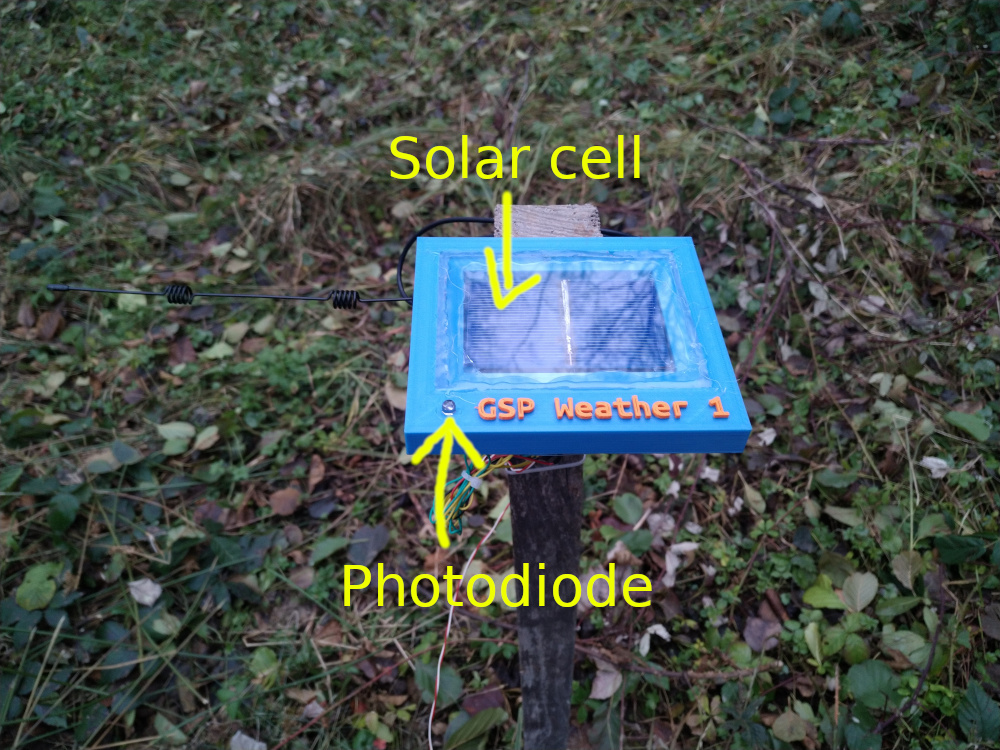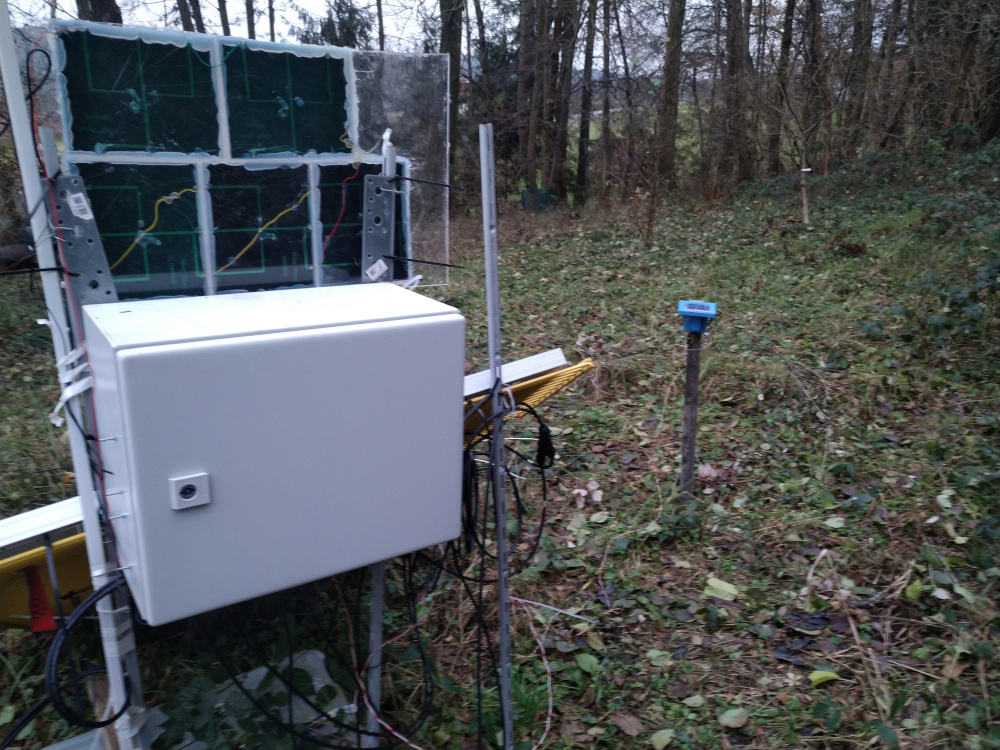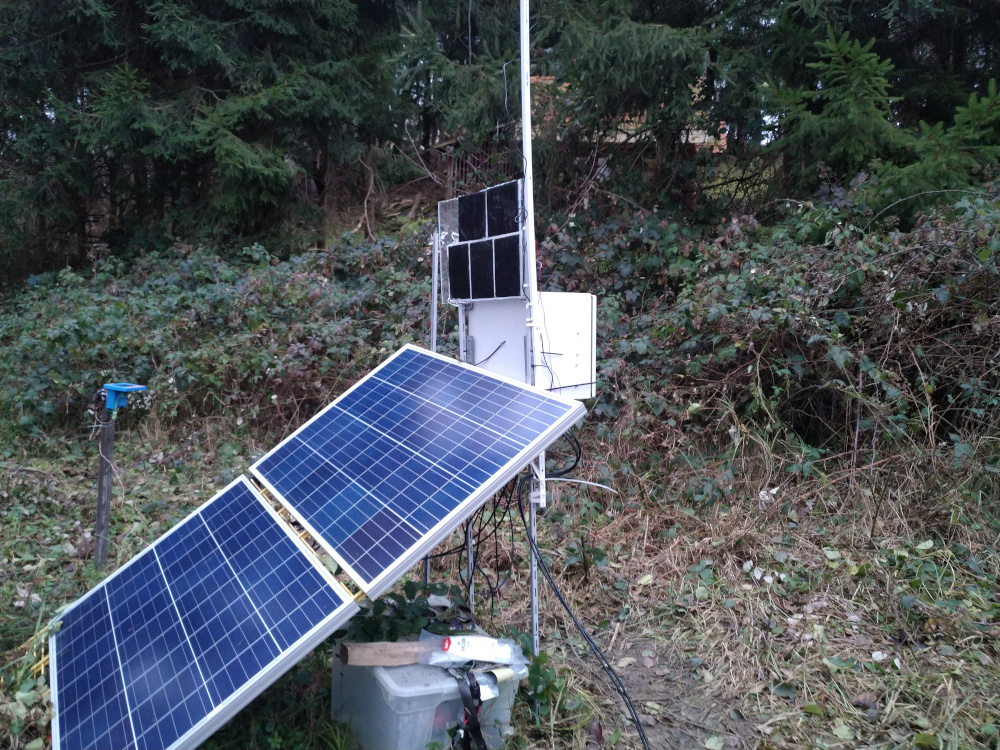Introduction
These last few evenings i spent working on a permanent weather station mission. It's called "Weather 1". (With a number, because undoubtedly it will fail sooner or later and it will fail and will need to be replaced).
It's the first Garden Space Program mission powered by Solstice. It's also the first (and probably last) mission using an ESP8266 system, this chips are just horribly limiting in their IO ports and the Wifi is both shit in range as well as features (can't even do a proper Ad-Hoc/unmanaged Wifi mode).
You can watch the incoming data live.
Technology
Main goal of the mission is to provide outside temperature and air humidity for at least a year. Secondary goals are to better classify the "humidity" part of the sensor and to provide more data about available light at the Solstice location.
I'm using ye olde DHT 22 to sense the temperature and humidity. The humidity sensing will go bad over time, that's just the nature of this type of sensor. A long-term mission like this will help me learn more about that behaviour and will help me learn more on how to use this type of sensor outdoors.
The secondary goal of measuring light levels sounds ridiculous at first, since i have a big solar station sitting right next to Weather 1. But there's a problem: If the battery of Solstice is fully charged, it just wont pull power from the solar panels, which means i don't get the full picture of whats going on.
Weather 1 has a solar cell of the same type as i have used in previous missions (and similar to the cells in my solar panel), but this cell is not hooked up to a consumer but instead is free-floating, which should make it act more like a light-meter. I also added an infrared photo diode to try to classify available near-infrared light levels. Both the solar cell and the photo diode are hooked up to an ADS1115 in differential mode (and i can adjust the gain remotely).
The main communication system is nRF24 (as with all other Garden Space Program probes), but i have Wifi as a backup, even if the signal strength is very, very low. Wifi uses UDP and the exact same packet format as nRF24, and Weather1 can route between those two. Of course, since the ESP8266 doesn't support Ad-Hoc/unmanaged Wifi (or external antennas for that matter), this is of limited use. But hey, it's an experiment in backup communication routes.
The case is designed by me in OpenSCAD and 3D printed in PLA. I'm using M3 ruthex screw inserts, you know, that type that can be melted into 3D prints with a soldering iron, here's the Amazon link.
All software as well as the design files for the case are in my mercurial repostitory.
Photos
Here are some project photos.
Electronics


Installation


Location


|


